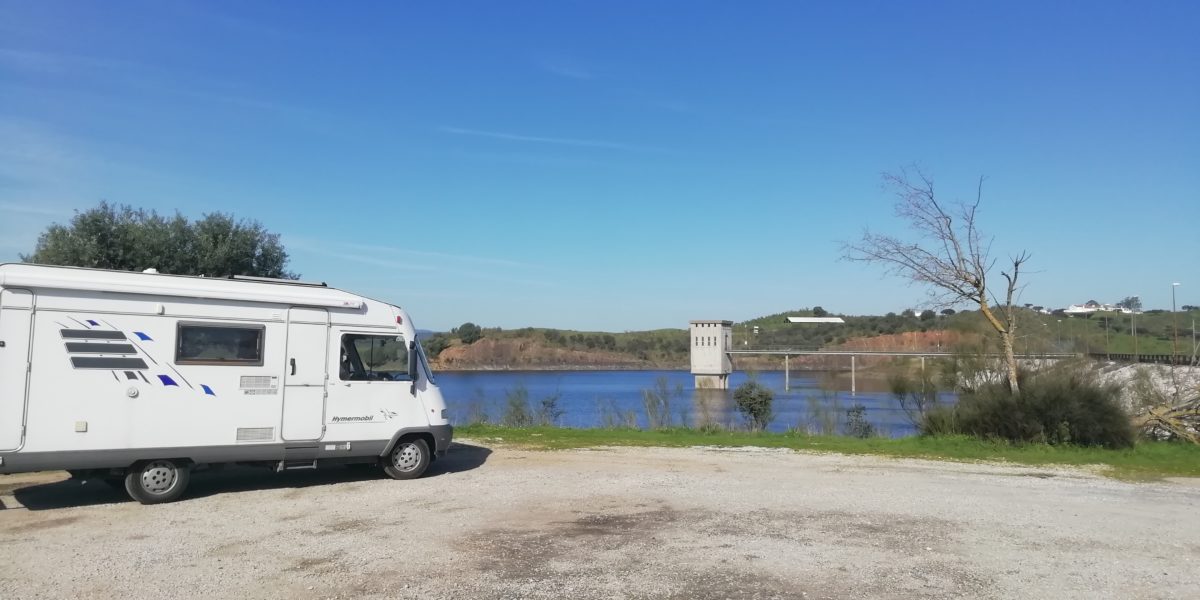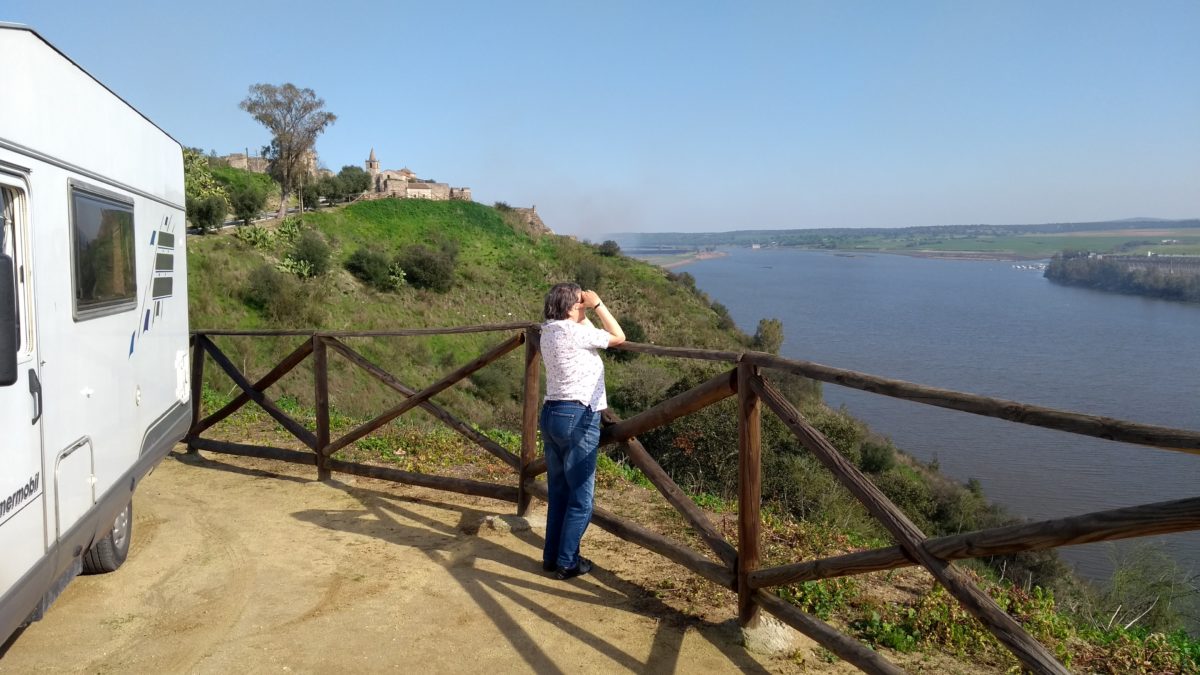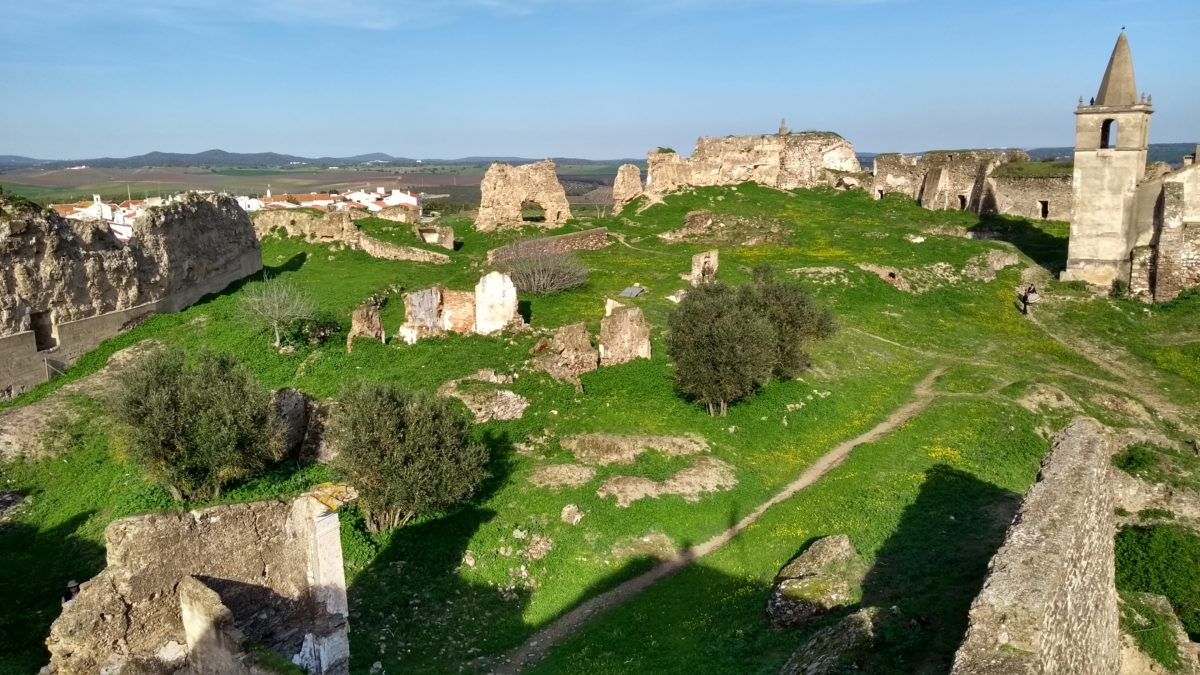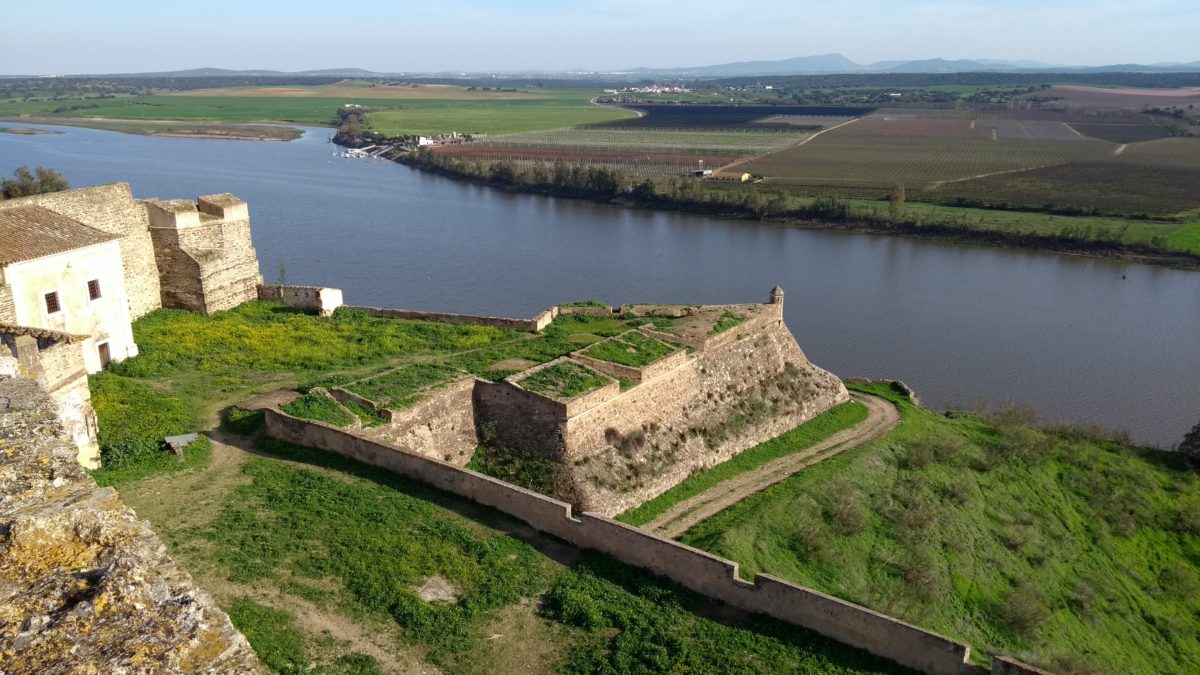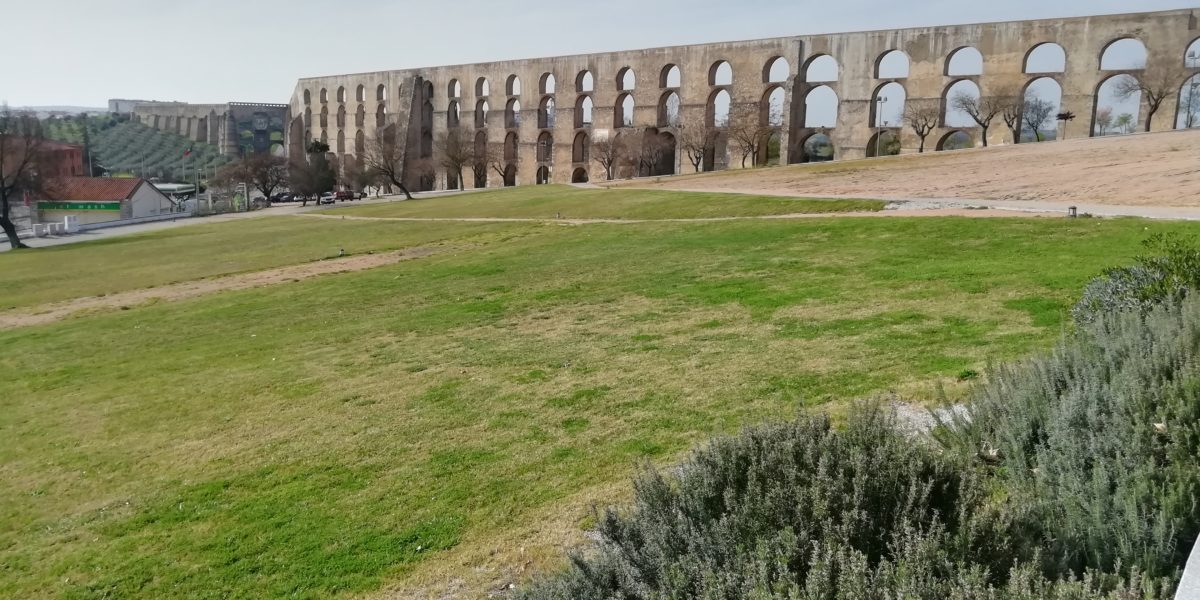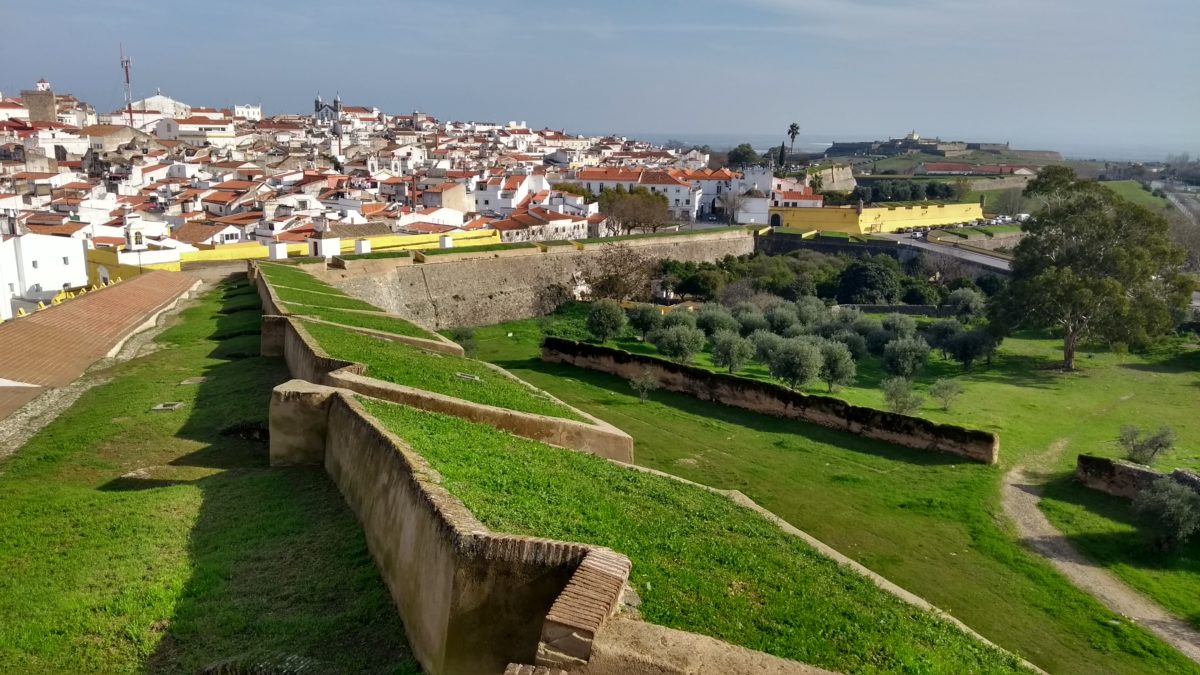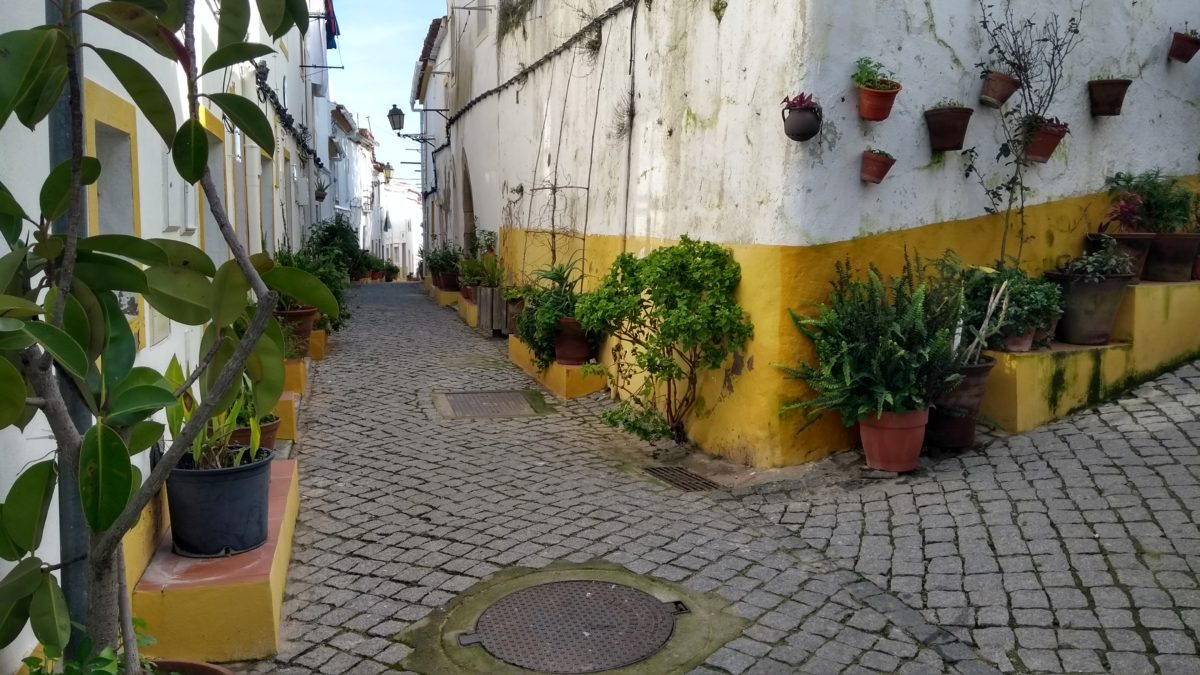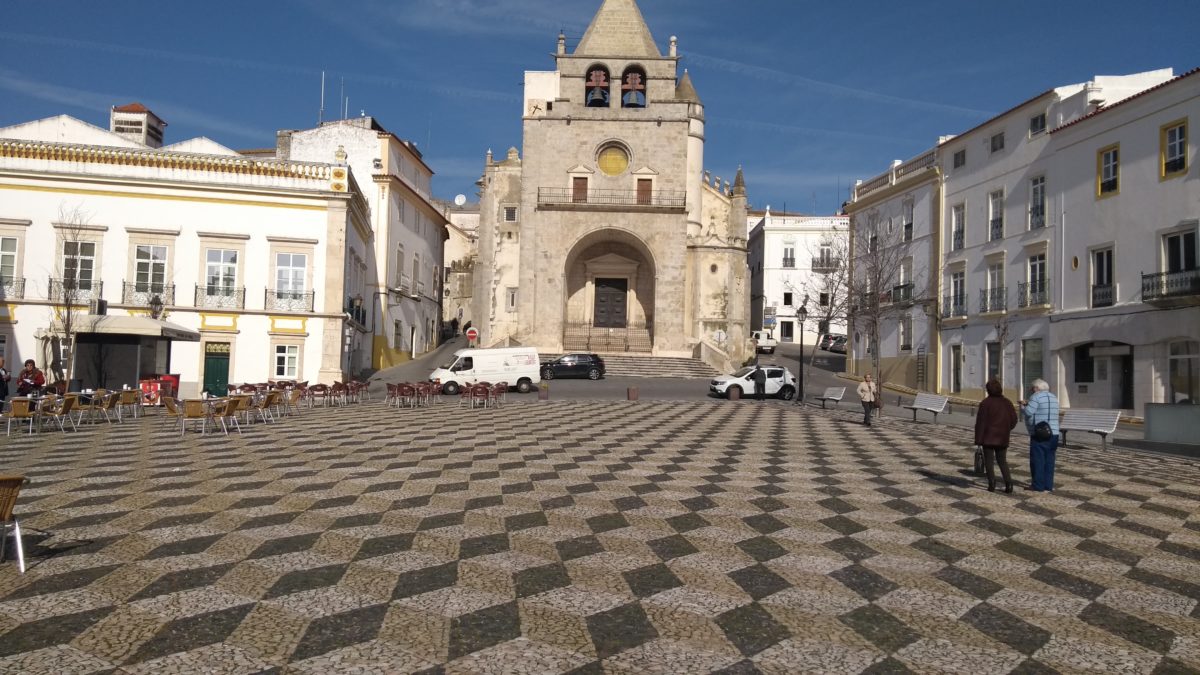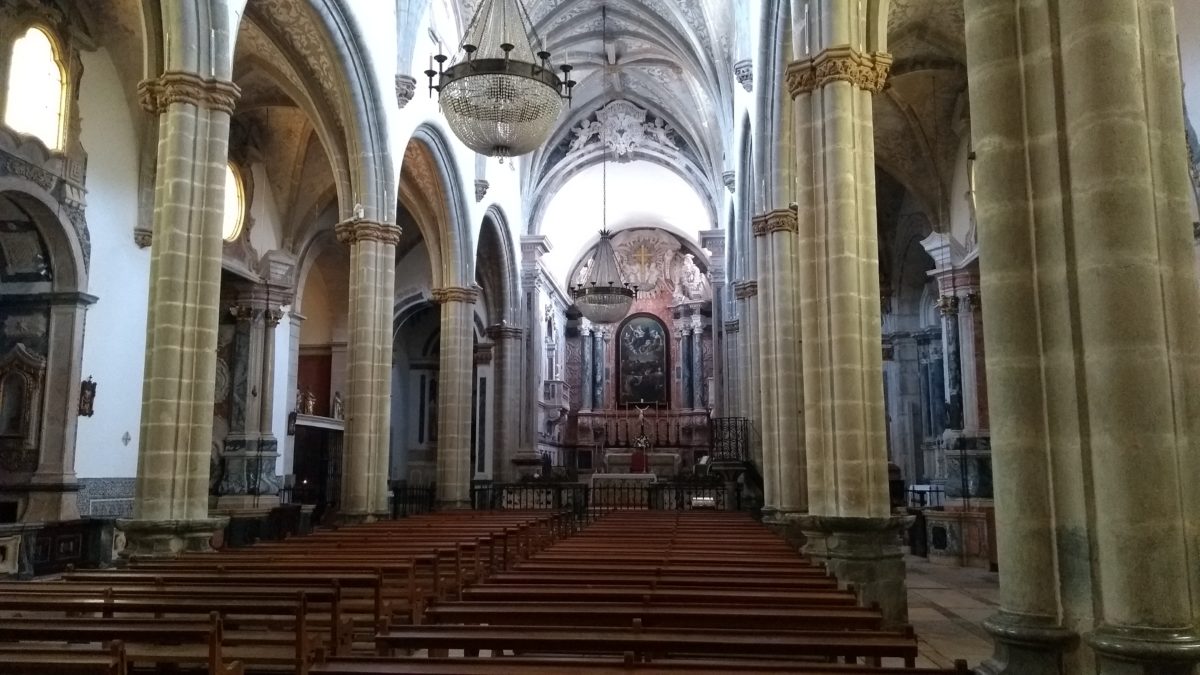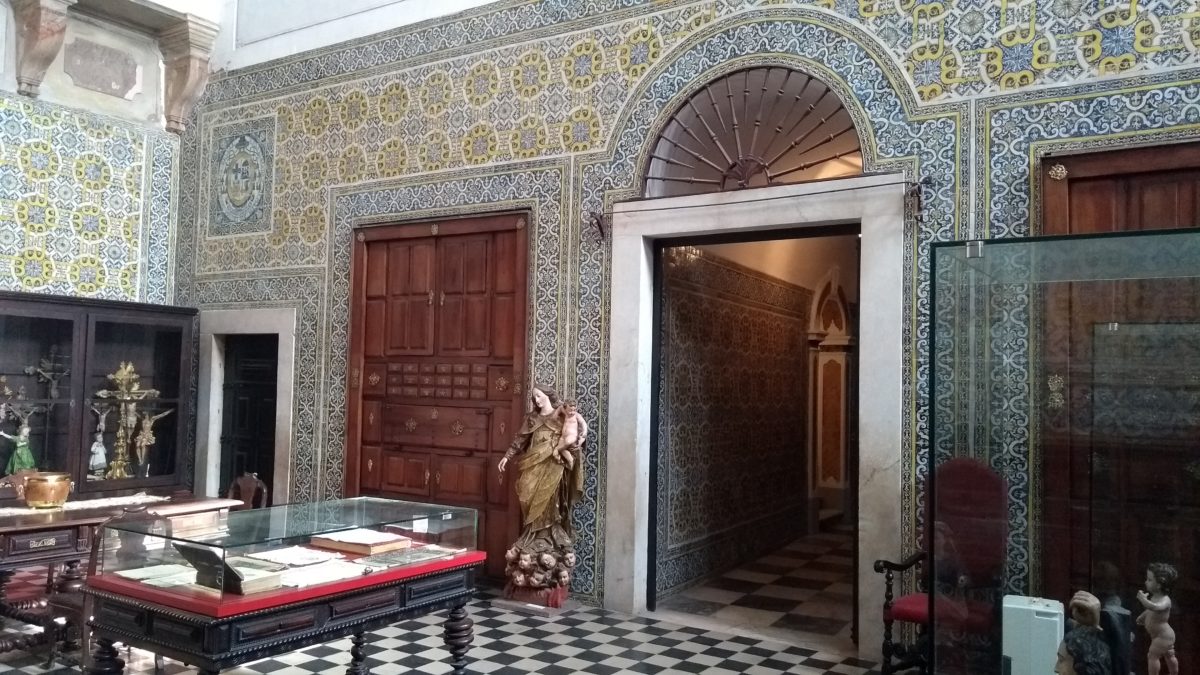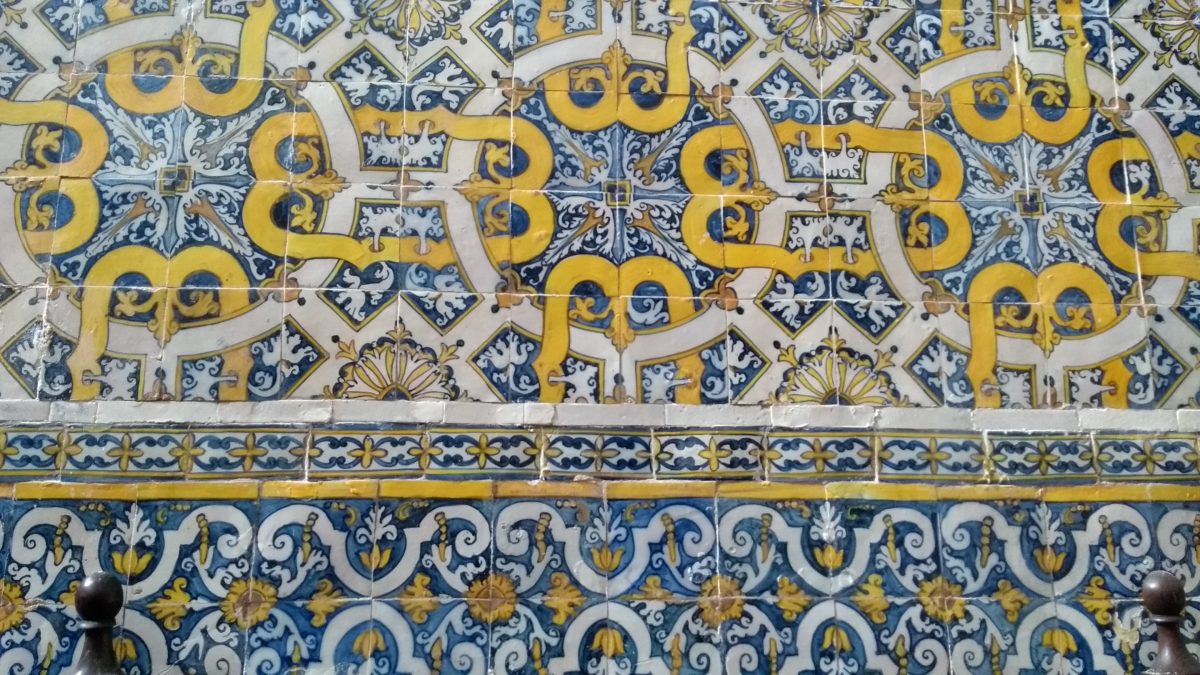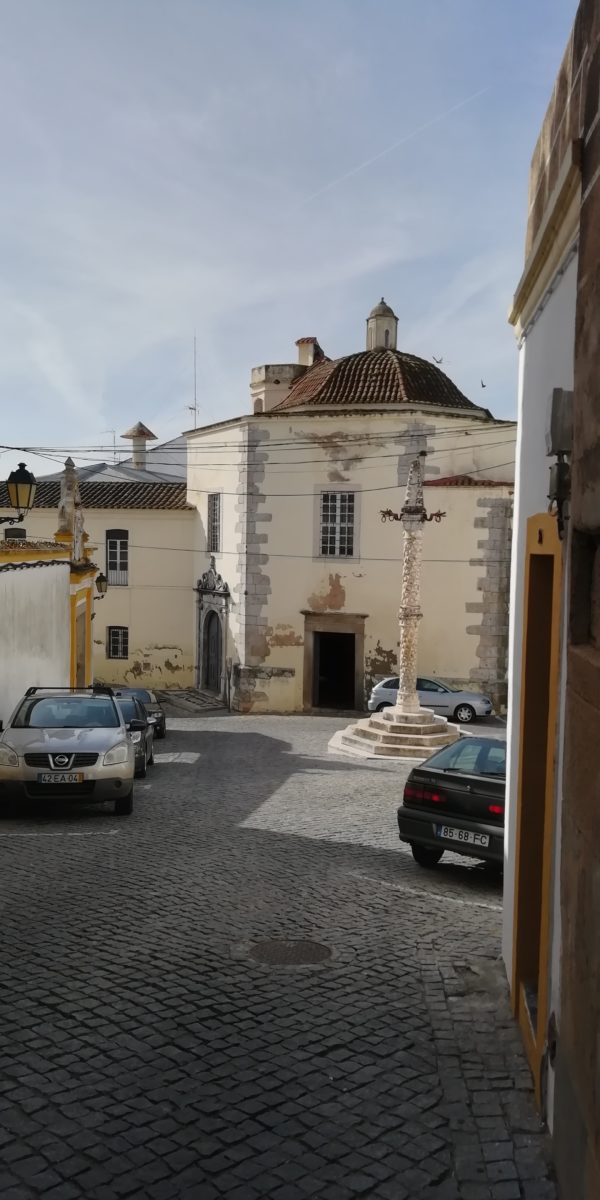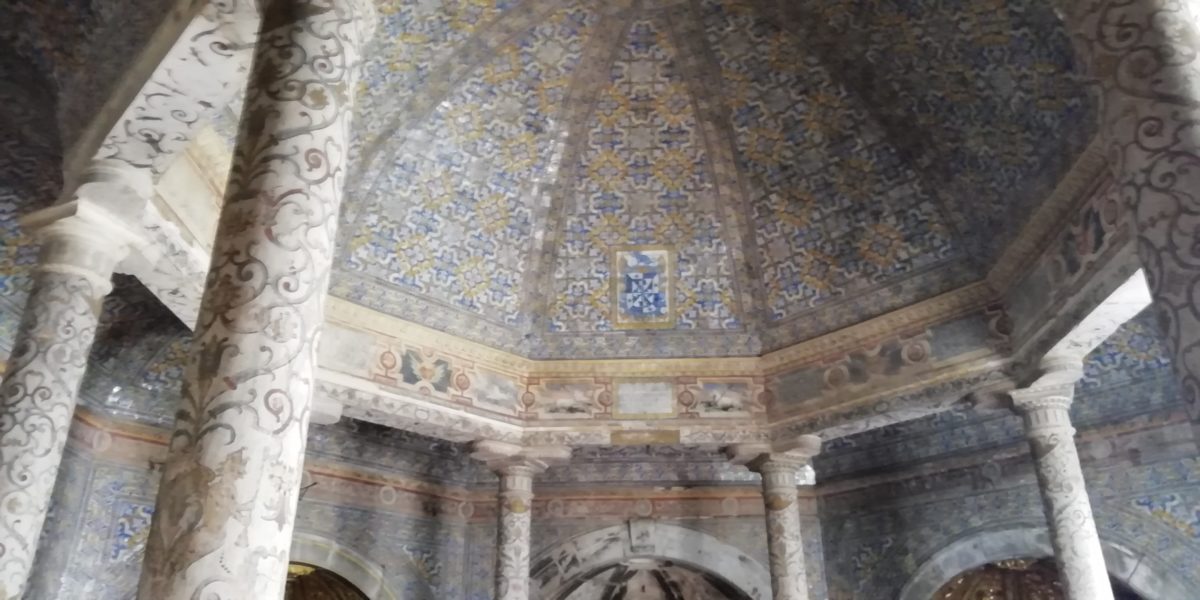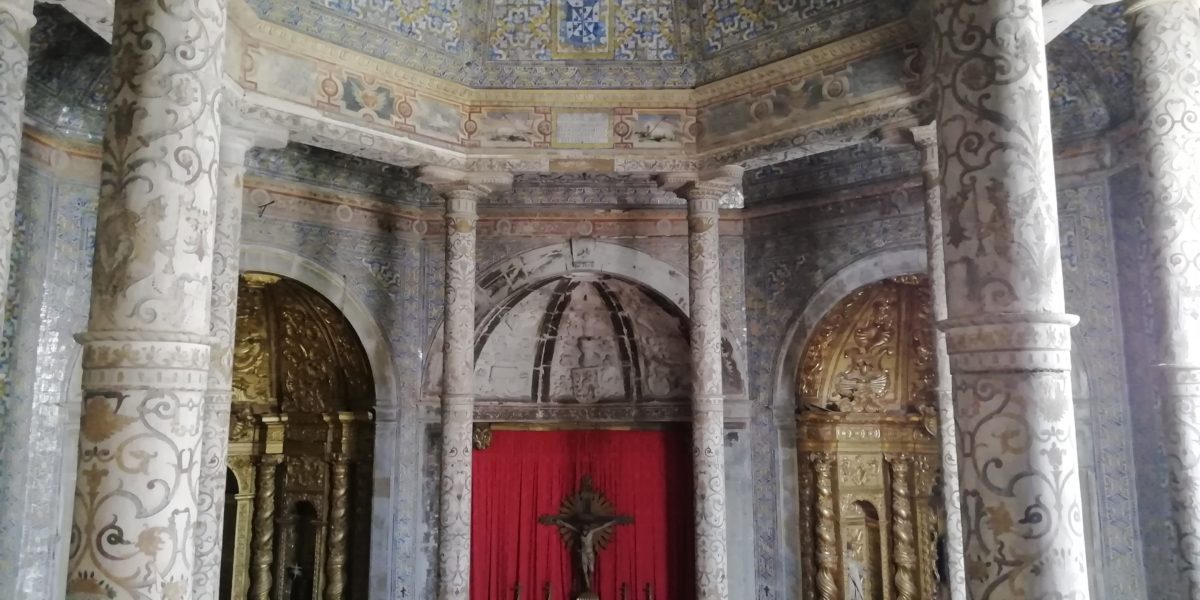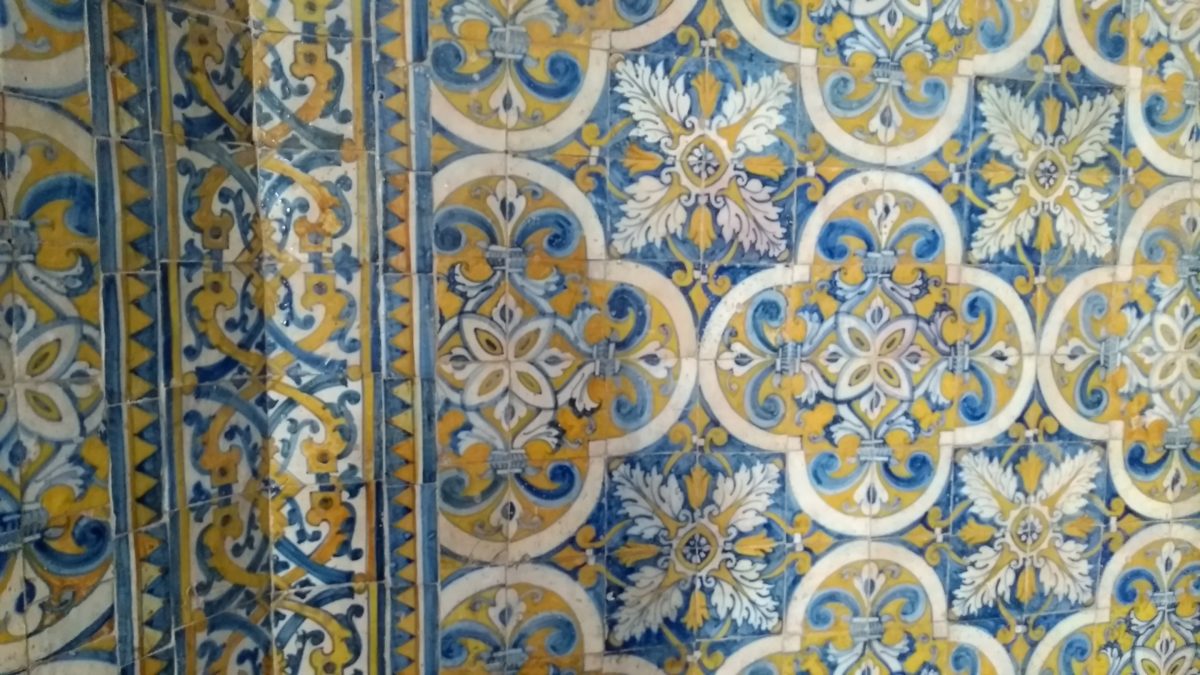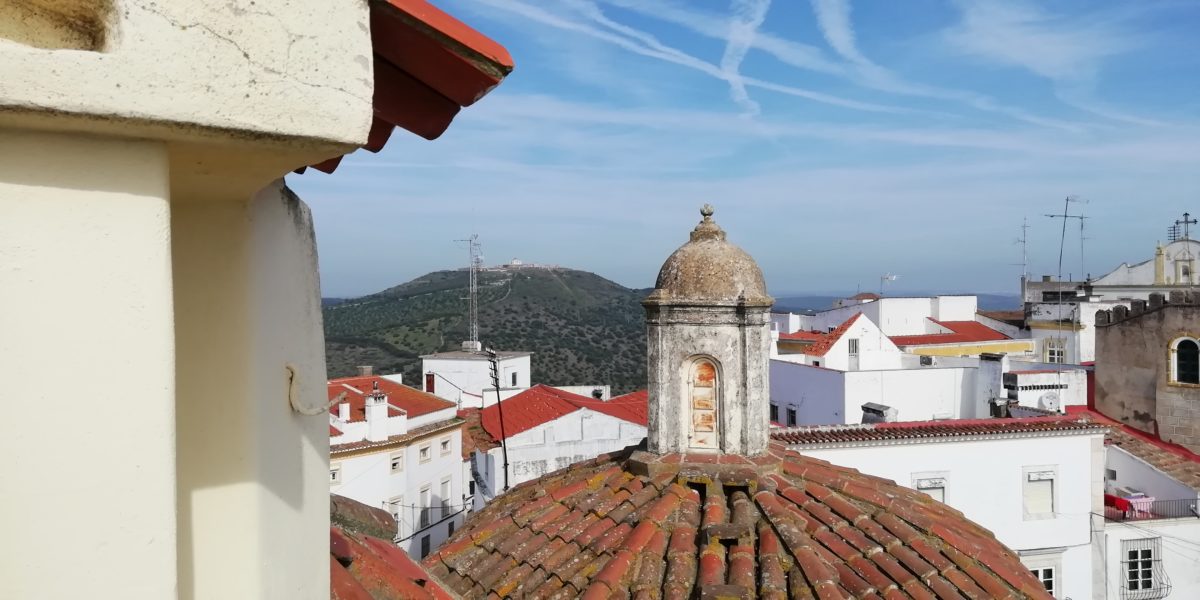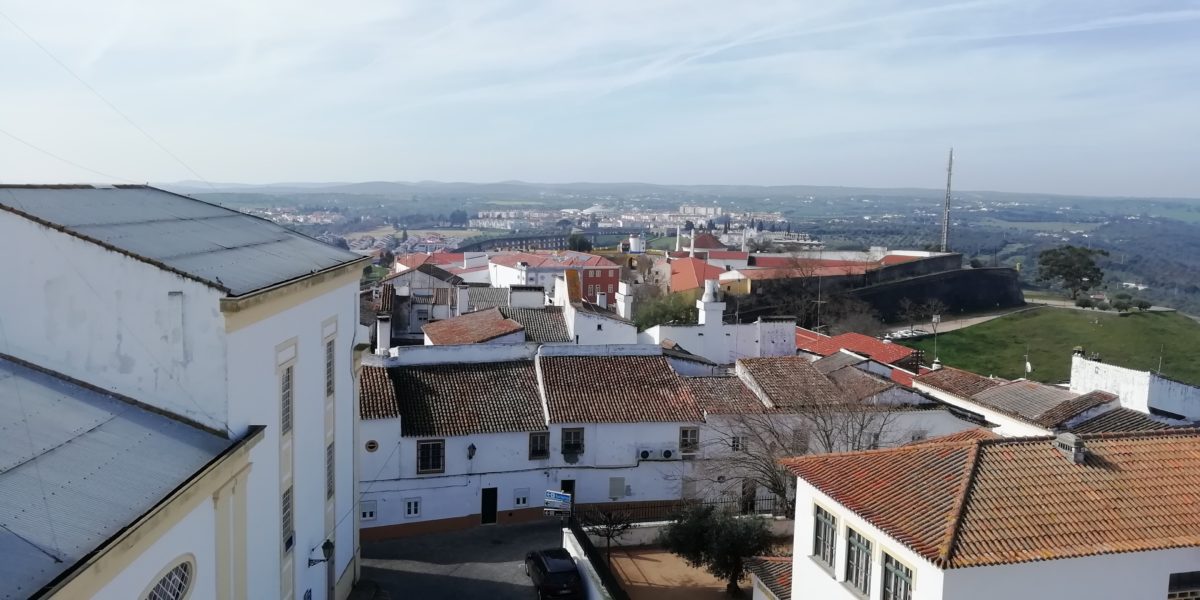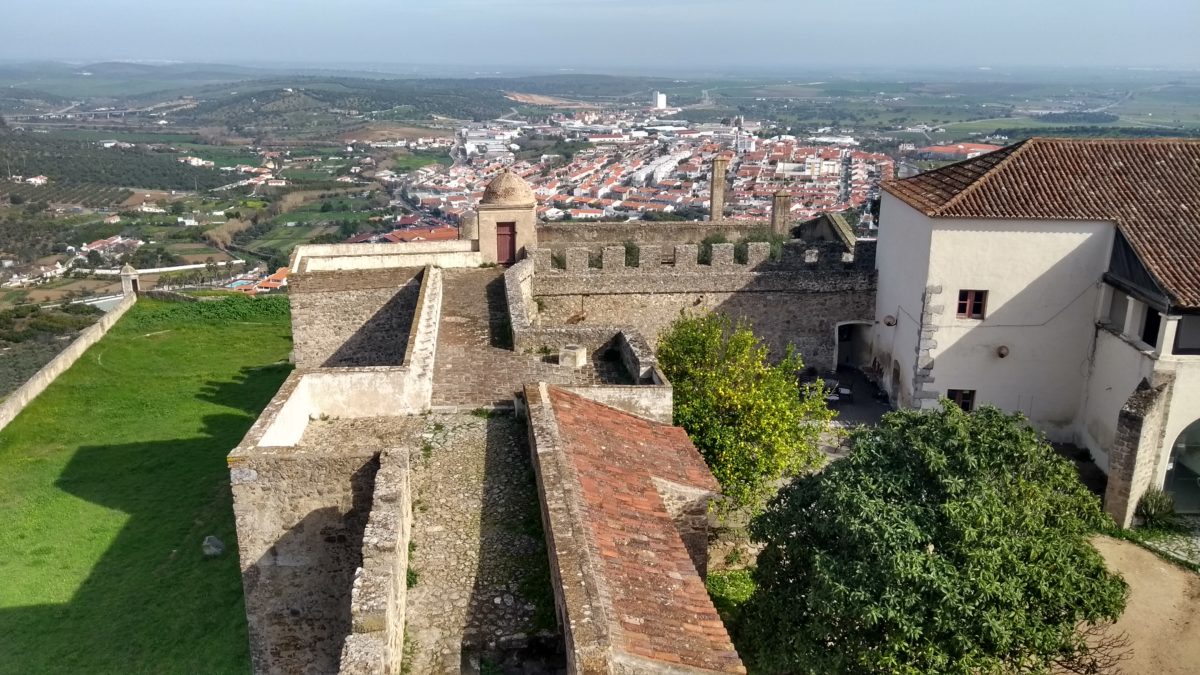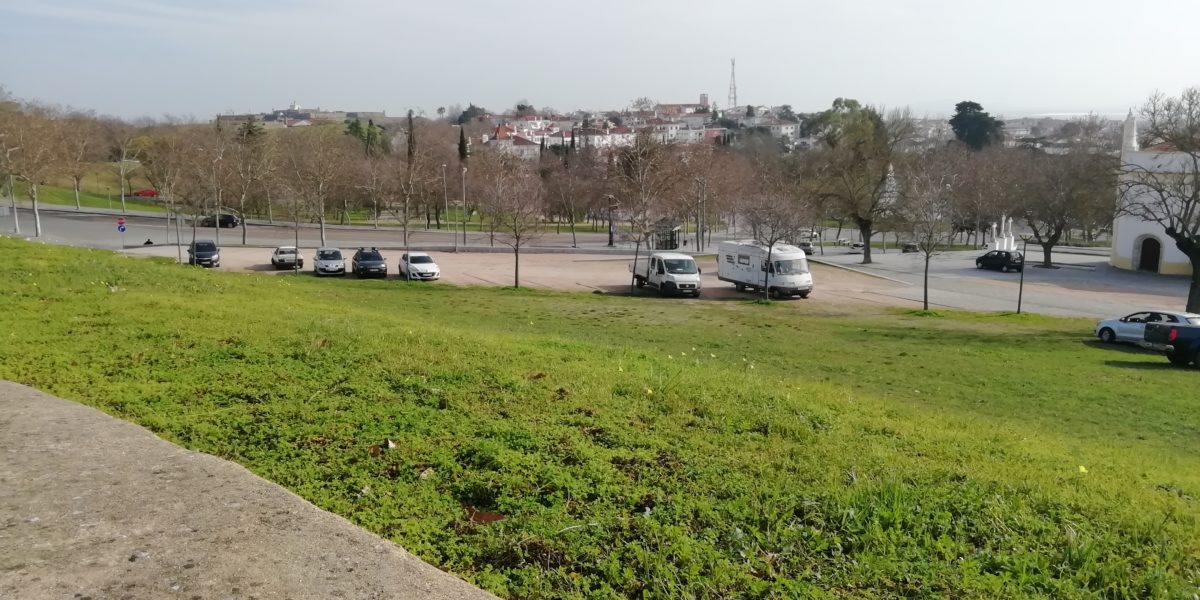Some of the best village ramparts in France
Wednesday morning at Monsaraz was just as misty as the previous few days however today there was also a brisk northerly breeze that blew the mist away well before 10am. Thus we were able to leave Monsaraz in bright sunshine which meant we could enjoy the views as we dropped down from the hill and started north. First job was to empty the waste tanks at the service area at the next village. The water tank was still 3/4 full so we declined the offer of fresh water for €3.50! The destination today is Elvas, a border town close to the Spanish border with good ramparts and a massive aqueduct. More about that later!
Coffee stop was a parking area beside a small reservoir (called a barragem locally) and we had it all to ourselves!
Lunch stop was a cemetery carpark at Juromenha which had a good write up in Park4Night. Access was a bit steep and narrow but the location was amazing. Juromenha is a small village high on the cliffs above the Guadiana river (which is the border with Spain here) and the cemetery carpark was right on top of said cliffs. Lovely spot. To get to the cemetery we had to drive right through the tiny village and past the enormous fort so after lunch we decided to investigate that fort.
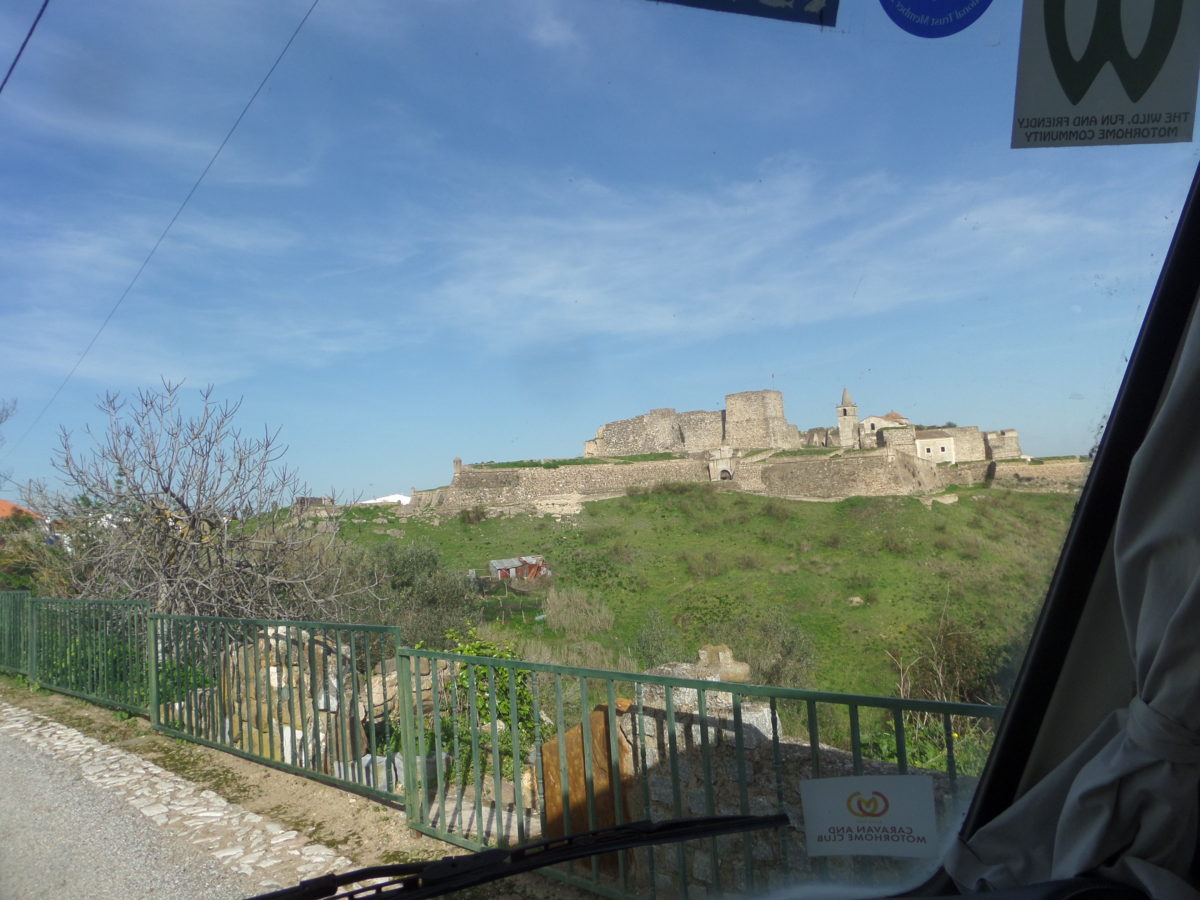
Obviously this whole area has been fought over for years and every little town has its castle – many are medieval although most would have dated back to the Islamic period originally. This fort was different and was clearly from the age of heavy artillery and was designed in what we think of as the “Vauban” style with large earthbanks and huge ravelins. The fort was in a bad way – completely ruined and unrestored and lacking any kind of information or even basic safety stuff! However it was a stunning location and quite extensive even if you did take you life in your hands poking around some of the buildings.
It was not far from Juromenha to Elvas and a small car park just outside the town walls near the top of the famous aqueduct. There were a few other vans here although this is just a car park with no motorhome facilities and we are sharing it with some cars and a commercial vehcile or two. Great views especially at night when they floodlit the walls and the aqueduct.
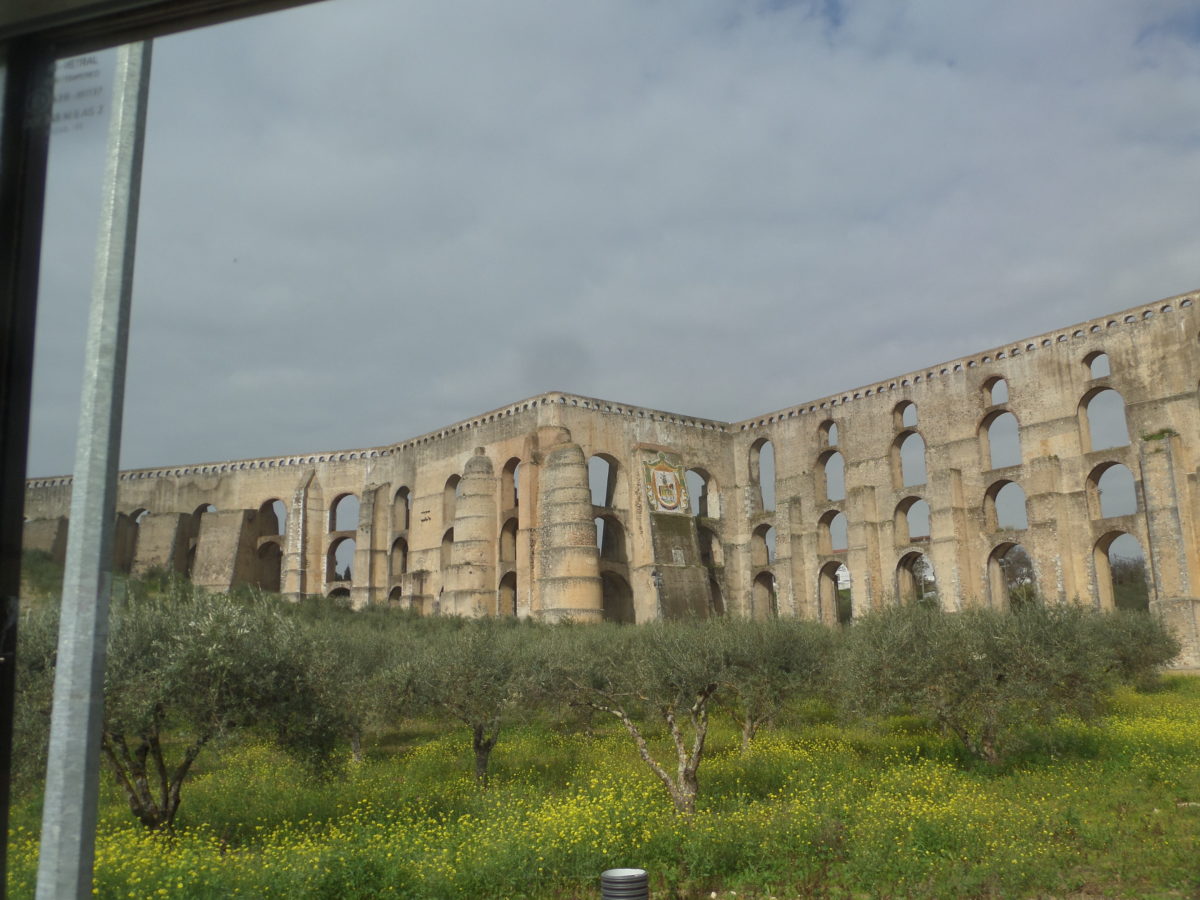
Thursday morning we left Bertie after breakfast and headed up the hill to explore the town. The walls here are said to be the largest town ramparts of anywhere in Europe and thus the town of Elvas is a Unesco World Heritage site. The walls were built in several phases but the style was set by the Dutch Jesuit Cosmander (1643) who applied the Dutch Fortification system with angular bulwarks and ravelins. This work was continued by Nicolau de Langres who also worked on the fortifications at Monsaraz and Juromenha. The style is very familar to us having seen many town like this in Belgium, Netherlands and Northern France. You can see a hint of this style in the UK at Berwick on Tweed and around some of the coastal forts such as Landguard at Felixstowe and especially Tilbury Fort in Essex. However to see a whole town enclosed in fortifications as ccomplex and extensive as this is quite rare. The nearest we have seen is Bergues in Northern France but that is much smaller.
We walked up through the town to the Tourist Office where we picked up a few leaflets and had a chat with the nice guy there although his English was not great. First stop was the big catherdral on the main square. Clearly this was once magnificent bit now is in a bit of a bad way with plaster flaking of the walls and the painted ceiling well past its best. We paid our €1 each to the little lady who spoke nowt but Portuguese but did her best! It was (or had been) very ornate and its heyday must have been magnificent. There was a small museum of sacred art in the sacristry but the star was the sacristry itself with its lovely wooden chests and wall cupboards and gorgeous tiling.
On our way from here to the Castle we spotted another church with open door. This was much smaller and also in need of huge TLC but it was splendid. The Ingreja Nossa Senhora Da Consolação (Church of our Lady of Consolation) was built in an octagonal form and was totally tiled from floor to the top of the dome! Only the pillars were just painted. It was stunning and really hard to photograph! There was another little old lady here keeping an eye on things. There was no formal charge but we gave her what we had paid before and she asked us of we would like to see the view from upstairs. We thought she meant go up to the blacony for a better view of the dome but in fact she was suggesting that we ascend the bell tower to the view point at the top of the tower! This was one of the highest points of the town and gave splendid views of the whole area.
Our final visit was to the old Castle at the top of the town and in the oldest part – in effect the arab medina. The castle was actually quite basic and little remains of it bar the curtain wall and one tower. We paid our €1 each hoping for a museum and some information but what we got was access to the wall walk and the top of the tall tower. Splendid views indeed as that tower is quite high and probably the highest point in the city.
After the castle we were walking down toward the Mercado (most Iberian towns have a covered market and these can be really good – even Mértola had a daily market in the tiny mercado) when we spotted a small chalk board outside the Cafe de Castelo offering Menus Completos for €7.95 or €9.95 for soup, dish of the day, dessert, drink, coffee, and bread and olives. We could not walk past that and so toddled in to see what the choice was. They were quite quiet but very welcoming and spoke a little English. In fact they got out an English version of the menu for us. Eileen chose fried chicken and I had the Alentejo pork and clams. The soup was lovely but we do not know what it was, the olives as pre-starter were good too. Eileen had a can of Fanta and I had a bottle of Sagres beer. Eileen’s fried chicken was not the battered deep fried chicked we had expected but thinly slices pan fried with garlic and which she pronounced the best meal out of the whole trip (actually there have only been four others so not a big field). Dessert was equally nameless but just as scrummy and then there was a tiny, intensely strong expresso coffee. All for less than £9 each – we can’t see how they made a profit on that.
Staggering out of the cafe stuffed to gills we headed for the mercado but sadly it was closed – we are probably a bit late in the day for that. A noticeboard told us that the building was orginally used to build and store the boats and bridge parts used to cross the Guardiana. This seems very strange given the location on top of a hill at least 500ft above river level! From here we followed the inner walls around to the gate we had entered by the morning and then climbed up some of the outer works to see the aqueduct from near the point where it enters the city. Built in 1522 the aqueduct runs almost 5 miles from the hills to the west to provide a secure water supply for the town. It is a really impressive structure but sadly there is limited information about it. I would have expected a dedicated interprative centre anywhere else. This aqueduct is huge and a truly impressive bit of engineering. The Pont du Gard is old I know but much smaller than this and look at the promotion and tourist stuff there!
Tomorrow we move on to Marvão stopping to view the huge Napoleonic fort 1 mile north of Elvas.















